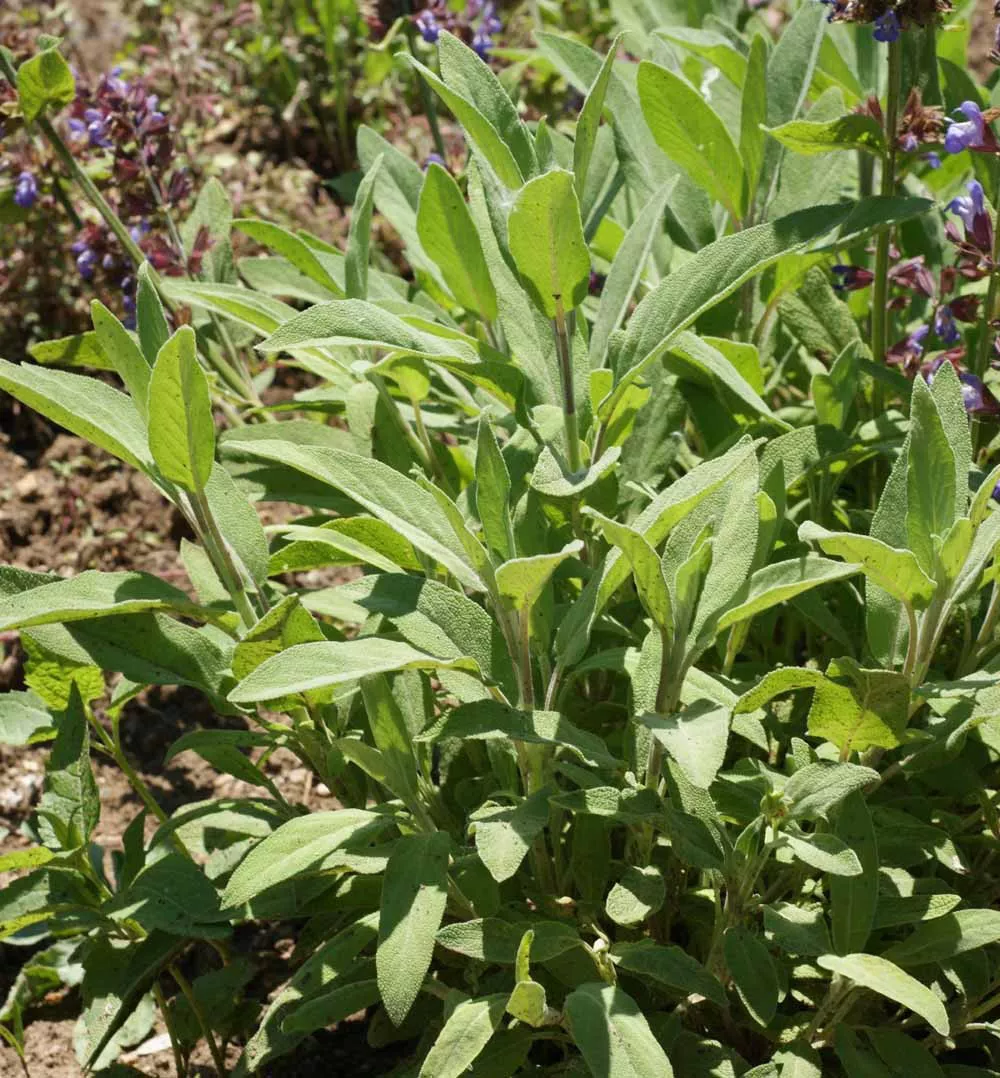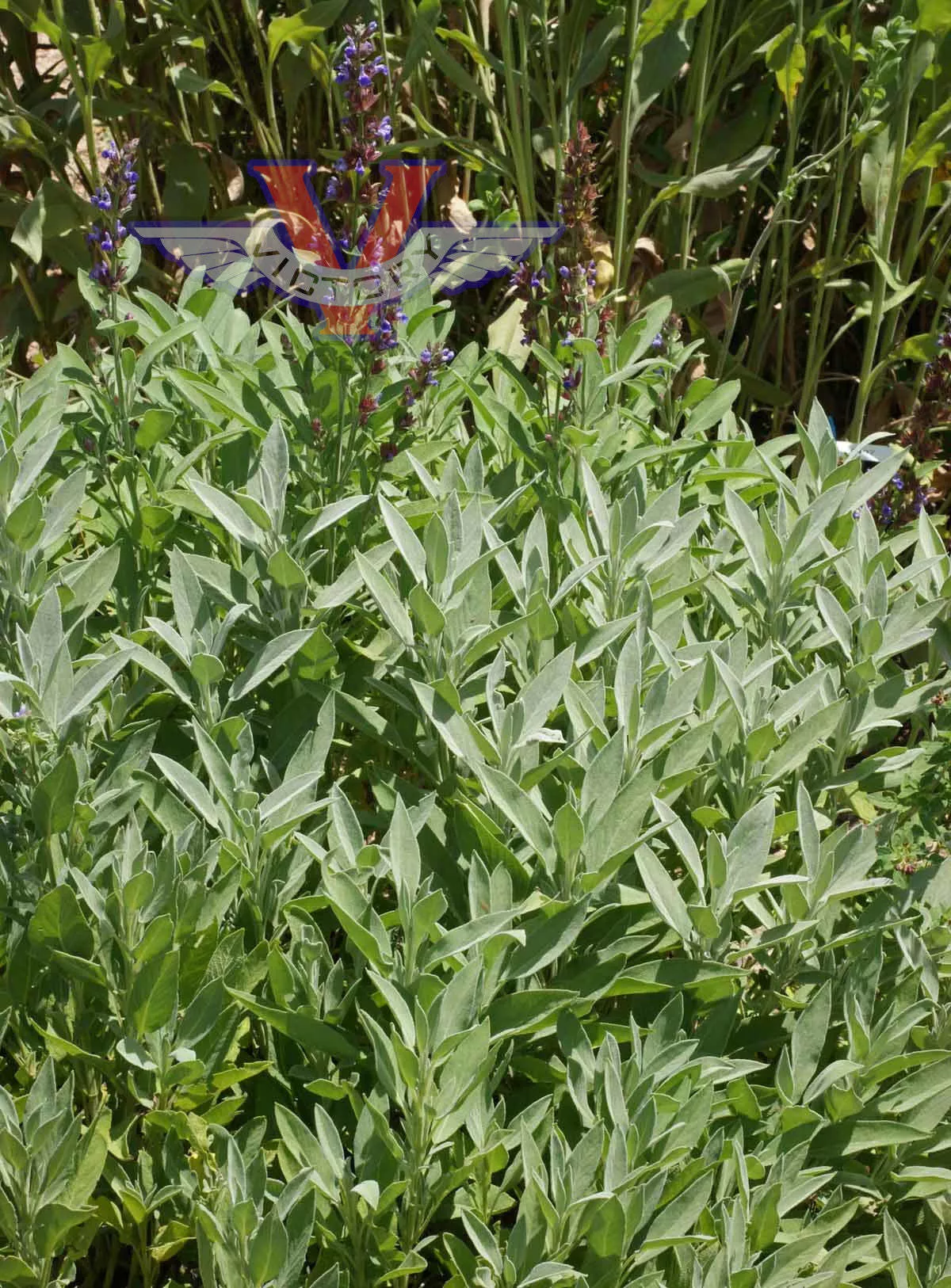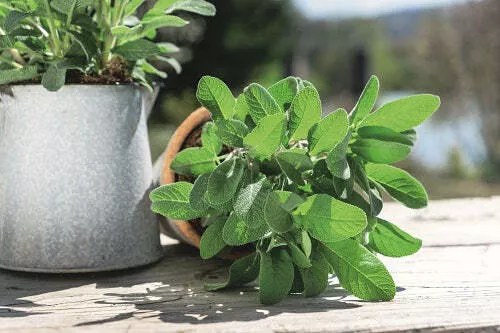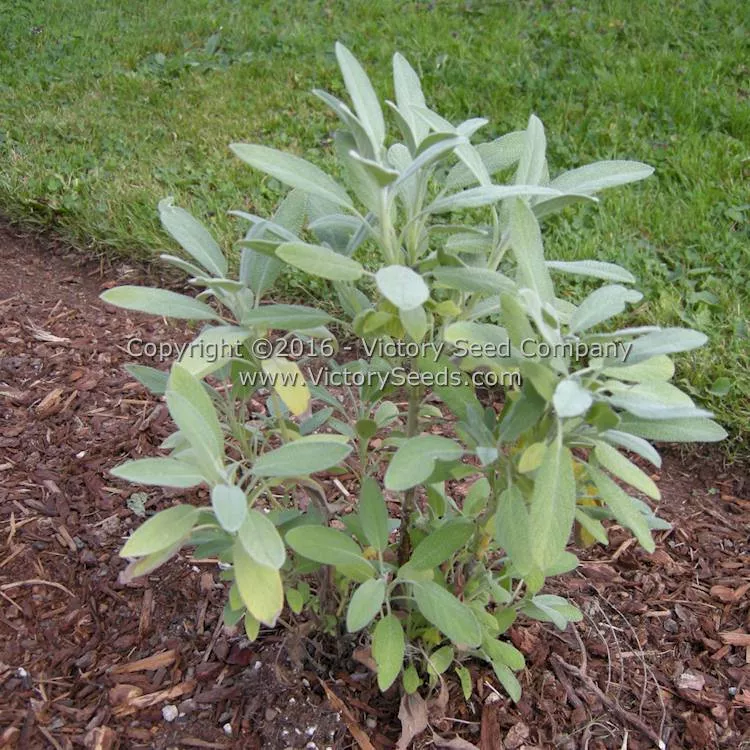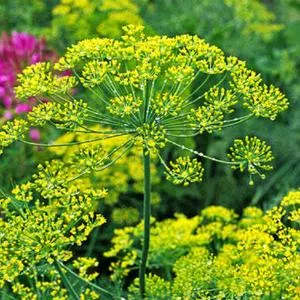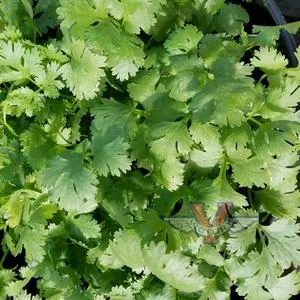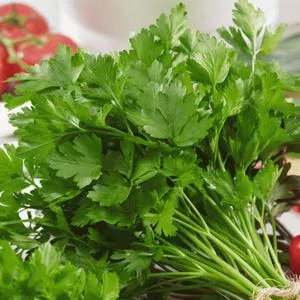



Sage (aka Common or Garden Sage)
Price: $4.28
SKU: 4000301It was once prized, and nearly universally used, for its medicinal properties. Even its botanical name hints at this fact as Salvia is derived from the Latin greeting, salvere, which means, "be well or in good health." The ancients had a saying, "Cur moriatur homo cui Salvia crescit in horto?" or, "Why should a man die whilst sage grows in his garden?" In the Middle Ages, the English had a corresponding saying, "He that would live for aye, Must eat Sage in May."
Perennial in USDA zones 5 to 8. Grown as an annual or indoors elsewhere.
Historically, sage has been used medicinally for its antiinflammatory, antimicrobial, antiseptic, carminative, tonic, astringent, and mildly stimulating properties. All parts of the plants can be used with late summer harvested leaf material typically being the strongest.
A gargle can be made with sage using equal parts vinegar and water. To make one pint, start with one-half pint of hot malt vinegar, pour it onto one ounce of dried leaves, and add one-half pint of water. This can be used to treat various afflictions of the throat and mouth from ulcerations, to sore throats, to laryngitis, to bleeding gums.
Used to treat nervous headaches, as a stimulant tonic for stomach and digestive issues, and to help relieve the effect from head colds. To make an infusion, pour one pint of boiling water over one ounce of dried leaves (or one-half ounce of fresh leaves), in a glass or other non-metal, non-reactive vessel, and keep covered for five minutes. Sweeten with sugar and lemon juice to taste. Dosage is one-half teacupful as required.
If you make the infusion stronger and forego the flavoring, it makes a useful "lotion" for treating skin abrasions and ulcerations.[1] Dried leaves have been smoked in pipes as a remedy for asthma.[1] Fresh leaves rubbed on exposed skin can act as an insect repellent.![]() The reported preferred temperature for vaporizing and aromatherapy is 374°F (190°C).
The reported preferred temperature for vaporizing and aromatherapy is 374°F (190°C).
- "A Modern Herbal," Mrs. M. Grieve, 1931, p. 700-705.

